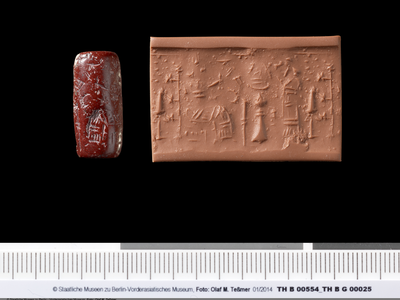[First posted in AWOL 5 June 2018, updated 8 March 2021]
Abstract
Between 3500 and 300 B.C. cylinder seals were one of the most important communication tools in the Near East. Embedded in administrative activities, they served as means of identification. Within the project "Near East Seals as Tools of Visual Communication through Space and Time", almost all of the cylinder seals of the Vorderasiatisches Museum Berlin have been digitized with a structured-light 3D scanner, which has been developed by the Fraunhofer-Institute. The results are now available in an online archive.Description
In addition to the common documentation methods of cylinder seals by rolled impression and photography, this collection also offers 3D-models and digital impressions. The 3D-scans can be performed without impacting the objects, thus reducing the risks. This method allows even the most fragile of seals to be documented, including those too delicate to be used for a rolled impression. These scans offer a true-to-scale reproduction of the seals.
Institutions
Vorderasiatisches Museum Berlin - Staatliche Museen zu Berlin, Excellence Cluster 264 TopoiKeywords
knowledge transfer, Seals, Mesopotamia, Near East, trade, technology, artDOI
10.17171/1-5Citation
Cylinder Seals, 2016, Markus Hilgert, Beate Salje, Barbara Feller, Anja Fügert, Helen Gries, Edition Topoi, DOI: 10.17171/1-5Contributors
Markus Hilgert
See all the Edition Topoi Collections










 Stumble It!
Stumble It!

No comments:
Post a Comment